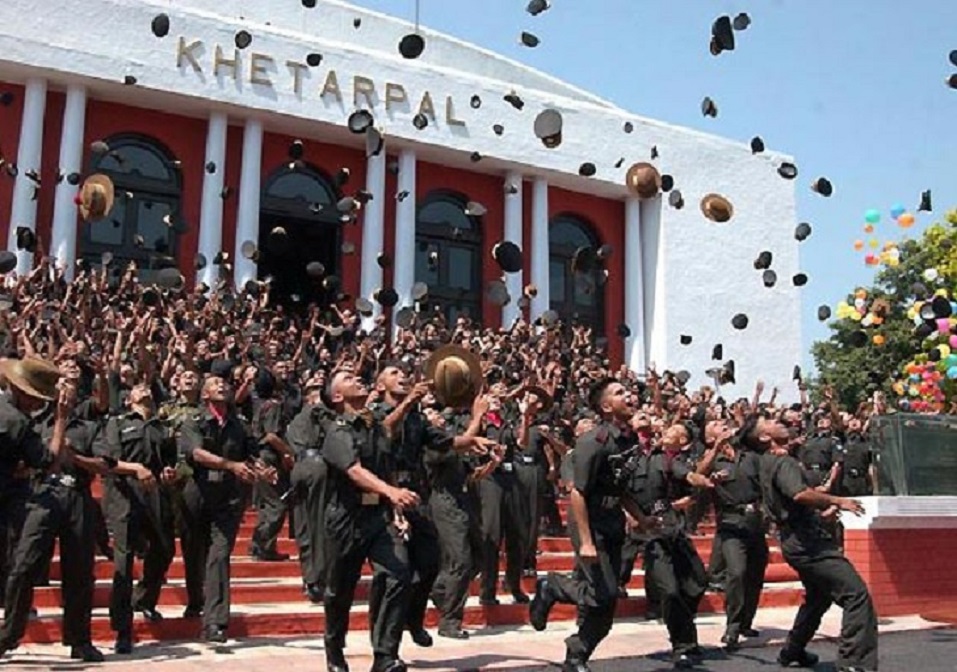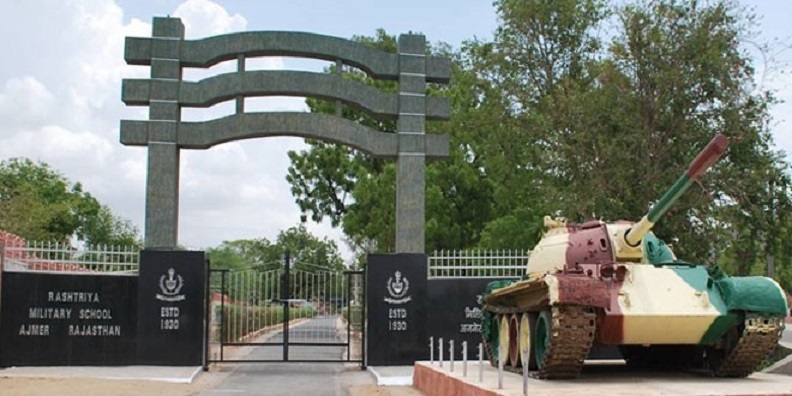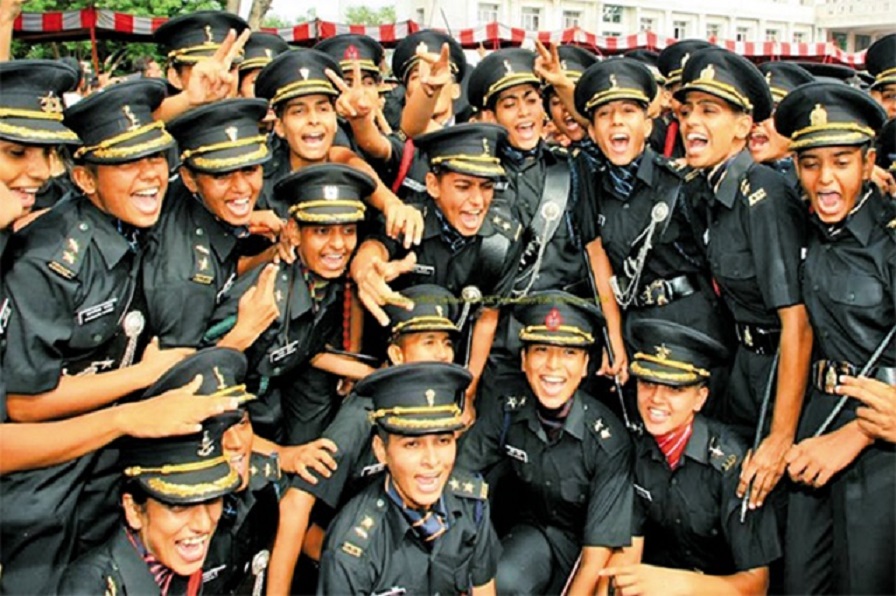Service Selection Board (SSB) is one of the most difficult selection processes in the country. This article is aimed at giving a brief introduction to the SSB selection process for young aspirants. National Defence Academy (NDA) has been rated as the eighth toughest college/academy to get admission in the world by an independent agency. SSB selection is done for inducting officers in the Armed Forces. An effort is made here to explain the process in simple terms for candidates.
Entrance examination/ Pre-Selection
Service Selection Board (SSB) is exclusively for induction of officers in Armed Forces. There are many types of entries for the officer cadre. Candidates have to write the entrance exams conducted by UPSC for seeking admission. These exams are the National Defence Academy (NDA) entrance, Combined Defence Service (CDS) exam, Air Force Common Admission Test (AFCAT) etc. Direct Entry (DE)/University Entry Schemes(UES)/PSB is available for Engineering and MBBS students after completion of the course into various streams. Indian Naval Academy (INA) considers JEE main score for selection and admission. Graduates, Post-graduates and Professionals aspiring for joining Indian Navy are mandatory to appear for Indian Naval Entrance Test (INET). The details are available at this link.
Candidates who qualify the entrance exams with high merit or cleared a Pre-Selection Board (PSB) at the campus interview, is likely to get a call letter from UPSC for SSB interview. There are four SSBs for Indian Army, five for Indian Navy and four for Indian Air Force conducted across the country. Generally, the call letter directs the candidates to the nearest SSB centre from his/her residence. Only those who clear the entrance exams /PSB with high merit can dream for a call letter for SSB interview. Hence the initial focus of aspirants should be to crack these exams with high marks.
The Process
The Service Selection Board is a group of specialist officers posted at every SSB centre who evaluate the candidates for suitability to become an officer in the Armed Force. Apart from the service officers, few psychologists are also part of the SSB board to select the candidate. These officers are dressed in mufti cloths and will never reveal their identity at the SSB centre.
A variety of tests would be conducted by SSB for the five days to identify the potential of the candidates. SSB selection starts with a screening test. Screened candidates will remain with SSB for another four days. The Group Task Officers (GTO) and psychologists evaluate by tucking them with a series of tests. The entire process will conclude with a conference/ meeting between candidates and officers of the board. The result will be announced on the fifth/last day. Only selected candidates can stay back for medical examination. Food and accommodation would be arranged by the SSB centre during their stay. Transport will be provided to the candidates from the nearest railway station to the SSB centre and back.
The Arrival at SSB
The candidates have to arrive at the railway station near to SSB centre at the date and time specified in the Service Selection Board call letter. The candidates will be picked up by transport to the SSB centre. On arrival at the SSB centre, all the required documents and certificates of candidates will be examined. Later candidates are formed into groups of 15 numbers and a chest number will be provided to each one of them, which they have to wear for the next five days at SSB. A brief handout of the selection process, likely to be held in the next five days is handed over to the candidates to make them comfortable.
Stage I – Screening Test
During the screening test on the second day, both verbal and non-verbal intelligence test and a Picture Perception and Description Test (PPDT) is carried out. In the PPDT test, the candidates are given 30 seconds to identify a blurred or a clear picture. Each candidate should observe it and record the characteristics seen in the picture for one minute. In the next four minutes, the candidate should make a story in over seventy words. He should record the approximate age, gender, mood of the main character they visualised.
In the next test, two candidates will be given stories which they may study/revise and should narrate it in less than one minute. Later the group will be asked to create a common story involving each picture stories they perceived. After the completion of these screening tests, the eligible candidates are shortlisted and announced. Rejected candidates can return home.
Selected candidates will be asked to answer a questionnaire on five-personal information. The candidate interview will be done on subsequent days based on this personal information provided at this questionnaire.
Stage II – Psychology test
After the screening, the selected group will go to the next stage, which comprises of psychological tests.
Thematic Appreciation Test (TAT) or picture story writing is the first one. This test is more or less like Picture Perception & Discussion Test, where the picture showed is deliberately kept little unclear. The picture is shown for thirty seconds for which a story needs to be written in the next four minutes. 12 pictures are shown successively. At last, a blank page is given to aspirants to write a story of their own like. Candidates cannot discuss with his peers during the proceedings.
Word Association Test (WAT) is the next test. Sixty simple common words are given in order. Each word is shown for 15 seconds. For each word, the contenders have to write the thoughts that are coming into the mind in response to the word displayed.
Situation Reaction Test (SRT) is the next one. In SRT, a booklet is given to candidate with 60 situations for which responses are to be given back in just 30 minutes.
Next is the Self-Description Test (SDT) which consists of five questions querying about the candidate family, friends and self-perception.
Stage III – Group Test by GTOs
In the third stage, Group Tasks are conducted by Group Task Officers (GTO). GTOs are a group of service officers specially trained for these tasks. They inject a series of group tasks including physical activities. These tasks include group obstacle, individual obstacle tasks, small group tasks, group discussion, progressive group tasks, group planning (military), command tasks, a lecturette and a final combined group task. These tests continue for two days.
Group obstacle and individual obstacle tests grade the aspirants’ ability to overcome physical barriers at an individual capacity as well as collectively. Group tasks judge the flair of a candidate to take the whole group for successful completion of a specific task provided by GTO. Group planning test ascertains the intellectual capability and analytical approach in mission planning. Extempore speeches and group discussions are also done to corroborate the findings. Command task and final combined tasks are done to ascertain the influential and leadership qualities imbibed in the candidates. Enough scripts and photos are available on the conduct of these tests in the public domain/ internet.
Personal Interview
A personal interview is conducted by a specialist senior officer of the Armed Forces. He would take almost an hour per candidate for an interview to extract the hidden traits and personality of the candidate. He conducts his interview parallelly with the ongoing Group Tests from day 2 to day 5. The candidate may get a call from the interviewing officer any time during the GTO tests. The interviewing officer will have access to screening test answer papers of all candidates. He will cross-check candidates with some clever questions to reconfirm the traits of candidates.
Conference and Decleration of Results
On the last day, each candidate (one at a time) will get the opportunity to meet the assessors of the SSB board in a conference hall. All the officers who were involved in the tests would be out from their mufti dress and wearing their original uniform to attend the conference. During this meeting, they will look for the confidence, honesty and positive attitude in candidates to corroborate their findings. After this conference, the results of the SSB selection will be announced. Only selected candidates can stay back for medical examination. Balance can disperse and go back home.
Medical Examination
Post selection at SSB, a medical board will take over the candidates to certify their fitness. The medical board is conducted at the military speciality hospital located near to the SSB. The medical check-up is of high standards and will ensure that no sick person is selected. This medical board tests may continue for three days. After the medical tests, the board may certify the fitness of candidates for joining the Armed Forces. There are candidates who may get selection in SSB stage but may fail to clear the medical examination board. Henceforth, the medical test is very important for final selection. After the medical board, the candidates can return home.
Once the candidate is medically fit, he/she may get a call letter to join the respective military academy. For candidates that are medically unfit for some minor ailments at the medical board, may get a chance to reappear in the medical board again.
Title Image Courtesy : https://www.indiatvnews.com/news/india








